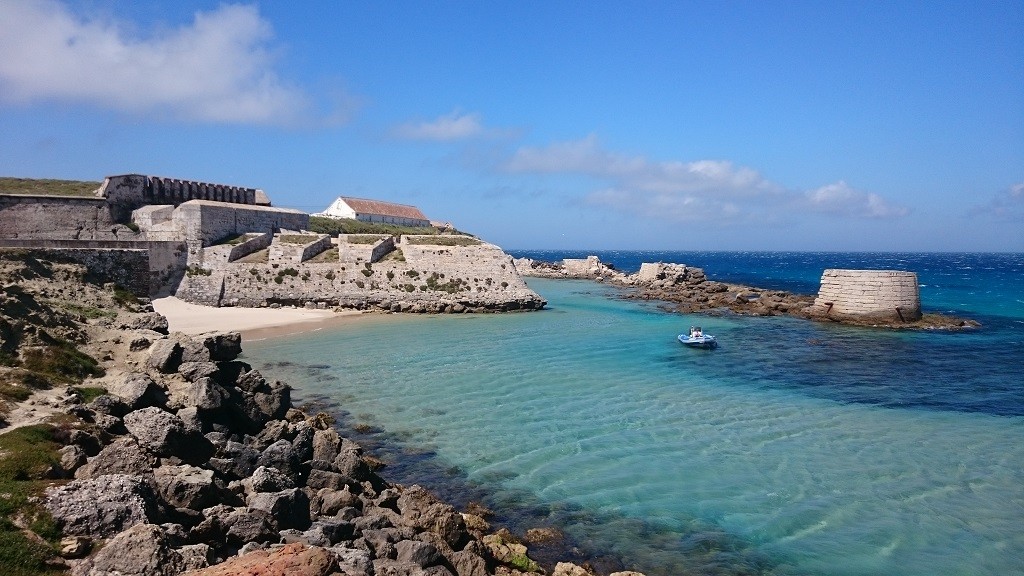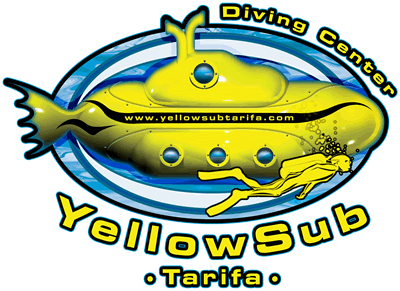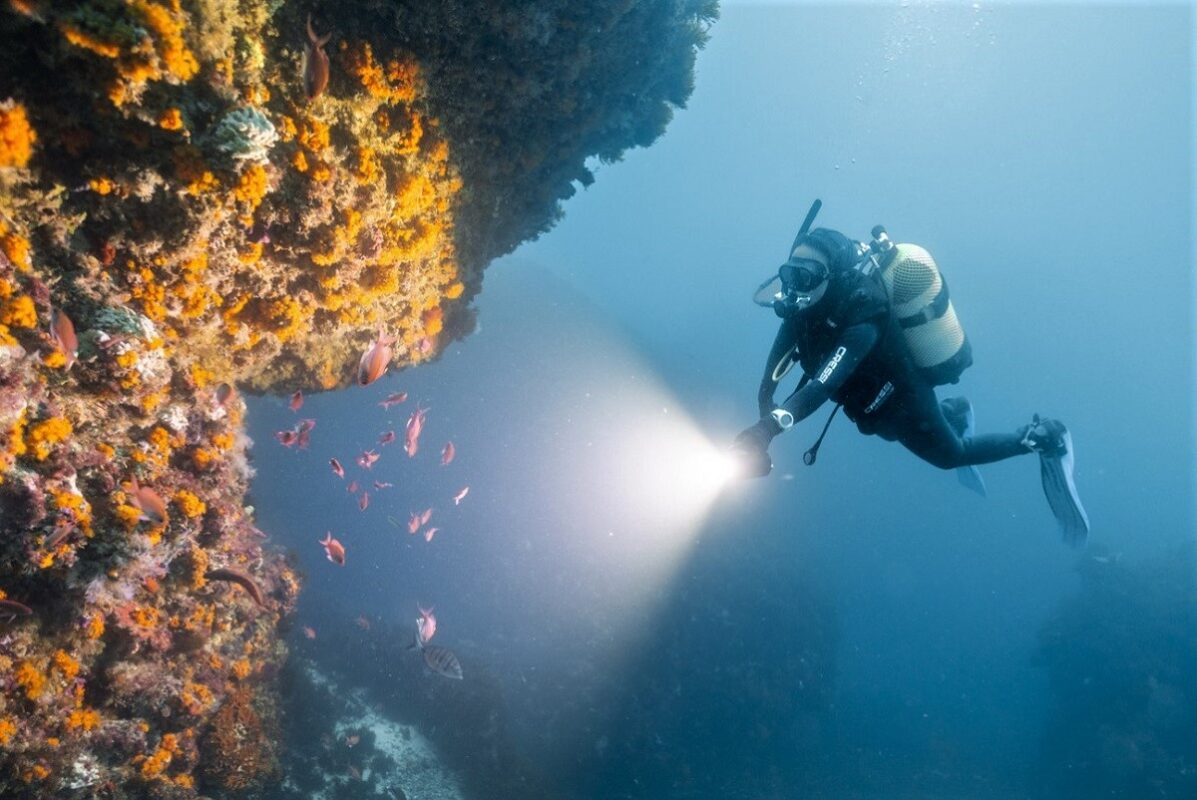Dive into an Unforgettable Scuba Adventure Around the Island of Las Palomas
Tarifa is a small town located on the most southern point of Spain. Surfers from all around the world come here to enjoy the wind and waves, other people go to Tarifa to watch the whales and enjoy the friendly atmosphere and endless white beaches. No doubt that these activities are worth a visit in its own. But if you really want to get to know Tarifa, you should also have a look under water. You will be surprised.
Diving is more and more popular in Tarifa. No wonder; with visibilities between 15 and 30 meters it has one the best conditions of the whole Costa del Sol and Costa de la Luz. Diving in Tarifa means diving in the Mediterranean Sea and Atlantic Ocean at the same time. It is located exactly at the point where both seas come together. Result is an abundant selection of aquatic life like octopus, moray eels, conger eels, spider crabs, lobsters, hermit crabs, rays, sunfish, turtles and more.
The distance between Tarifa and Marocco is only 14 kilometres. In fact it is the smallest passage between continental Europe and Africa. All the water from the Mediterranean Sea to the Atlantic Ocean and vice versa must go through this small gate. Result is that the currents can be strong here. Those currents, together with the sometimes strong eastern wind, have caused a lot of ships to be thrown on the rocks. Nowadays these wrecks are one of the interesting features you can encounter during a dive.
PADI Discover scuba diving course
Most of the diving in Tarifa takes place around Isla de Palomas, a natural park. Therefore you cannot dive on your own here but have to go with a dive centre. There are a few dive centres in Tarifa, the one we have chosen is called YellowSub Tarifa and is located in the harbour. All dives here are guided so we are sure we will be safe and see all interesting sites.
Our dive excursion starts at 10 a.m., when we enter the dive centre. The location is perfect; just a few meters away from the boat we are going to use. After checking in, we start preparing ourselves. Although we are in the south of Spain where it can easily be 35 degrees in summer, we are strongly advised to wear full wetsuits, a hood and gloves. Because of the continuously flow of fresh water from the Atlantic Ocean, the water always has more or less the same temperature; generally about 18 degrees. But with the proper equipment we should be all right.
The dive centre offers dives for divers of all levels and courses for beginners up to professional level. Dive sites are chosen by the level of the divers and the conditions; currents and wind. As we already have some experience, this morning the first dive will be to the San Andres, a wreck at a depth of 30 meters. The second dive will be a bit shallower, but certainly not less pretty as they promise us.
The best reef diving destination of the south of Spain.
Once all divers and equipment are on the boat, its not even ten minutes before we anchor at the first dive site, the San Andres. The San Andres, used to be a paddle steamship made of steel, which sank in 1856 during a storm. Just parts of the wreck are left; most marked are the stern and the paddle wheels. After a short briefing of the guide, the boat captain helps us putting on the equipment and our fins. Once everybody is in the water, the dive starts.

The first thing we see once were under water is a rocky landscape. We dont spend too much time looking at all the interesting features that are there, as our goal is the San Andres. We follow the guide until a depth of 20 meters, where a big arc comes in sight. This used to be the stern of the ship. Although parts of the ship are at 40 meters and even deeper, we stay at a depth of 30 meters. Here is the most interesting part of the ship. The visibility is surprisingly good; even at 30 meters its still quite bright. Because the wreck (The wreck of San Andres) is lying there already over 150 years, underwater life has had plenty of time to develop. Shining with a torch into one of the many caves, we look straight into the big eyes of a huge conger eel. Later we are told there are at least four conger eels that have their home there. Sometimes they go out to have a stroll through the surrounding area, but most of the time they stay in there own cave. Besides of that, we also see moray eels, a big lobster and a few spider crabs.
After 30 minutes exploring the wreck, it is time to slowly go up. Following the bottom, that gradually ascents, we see so many other plants and animals that we would like to stay here for at least another hour. But the amount of air left in our tank is telling us we cant. When we are just about to end our dive, the guide has a nice surprise for us. After doing a safety stop, he leads us to a small cave, called el boquete. With lots of crustaceans and magnificent views against the light its certainly worth a visit. The cave lso has an exit on the other site, to the island, but we want to go back to the boat so we go down again and exit the cave where we entered it.
Dolphins, Turtels, Vertical wall, Shelf, Wreck, Excellent visibility!
By entering the boat and taking our equipment off, the captain lifts the anchor and heads for the second dive site, just a few minutes away. This site is called la fortaleza. But first we have a surface interval, with something to drink and eat and enough time to enjoy the sun and to warm up. While we are having a break the captain, who grew up in Tarifa, tells us lots of interesting details about the fish and surrounding area. After 40 minutes we prepare ourselves to enter the water for the second time. This dive we can expect an underwater canyon landscape with big rocks and swim throughs and lots of fish. Gradually going down, we see that all we were told is true; we meet some big octopuses, moray eels, scorpion fish, gorgonians and more, to much to mention. The more you look around you the more you see. Fifty minutes later we are back at the anchor line.
After finishing the second dive it is time to go back to the shop. It is a nice surprise that they have hot showers we can use. Completely warmed up and dressed again we fill in our logbooks and have a chat with the staff about the other dive sites around the island. They tell us there are more then 20 dive sites, all interesting in a different way. Today we did two dives at the eastern side of the island, but at the western side there should also be some very interesting dive sites, with lots of nudibranchis, rays, big schools of fish and another wreck. We get so enthusiastic that we decide to come again the next morning.
For more information or bookings, contact Enrico of Yellow Sub diving school in Tarifa.
By Erica de Bruijne
Tarifa Travel © 2024

